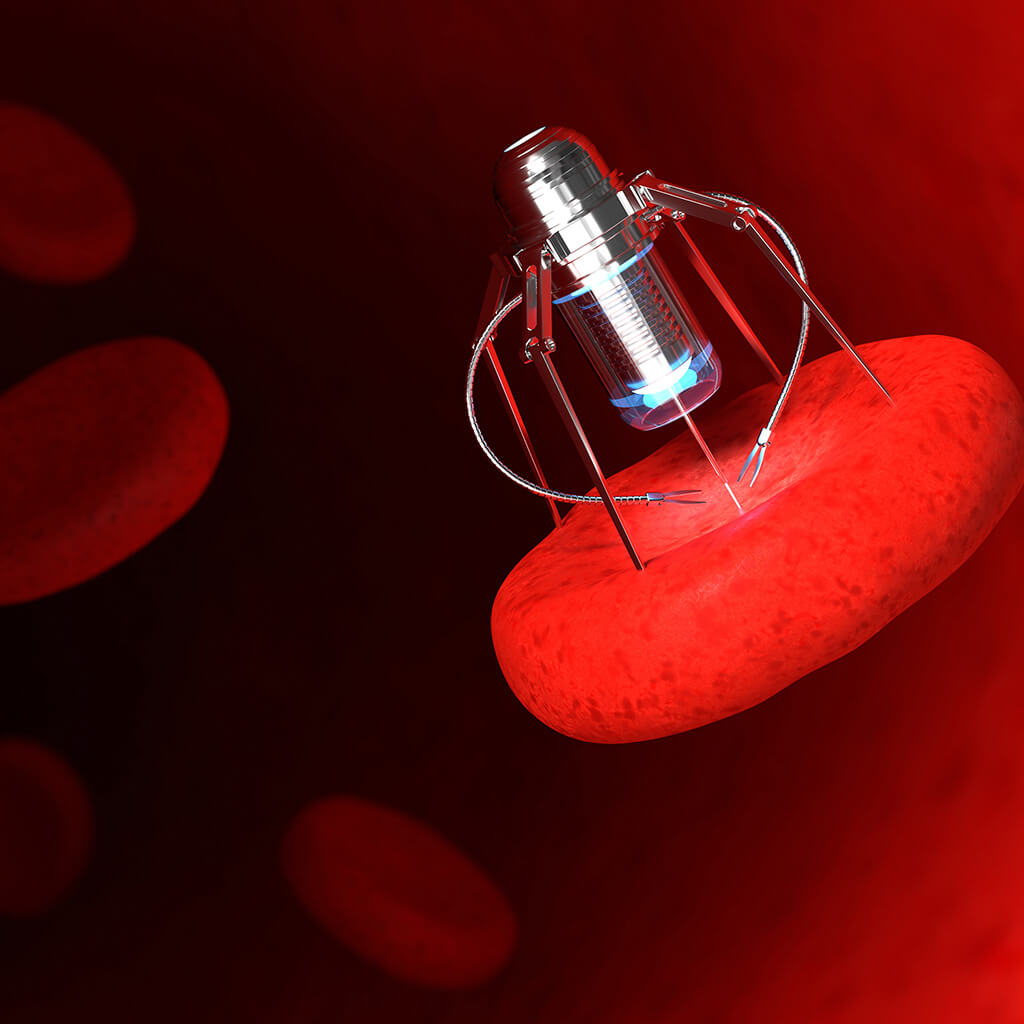Cancer has long been a formidable foe, but a new microscopic army is joining the fight. Imagine an army of tiny robots, each smaller than a cell, programmed to seek and destroy cancer with pinpoint accuracy. This isn’t science fiction—it’s the cutting-edge world of nanorobotics in cancer treatment. Let’s dive into the revolutionary battlefield where nanorobots are waging war against one of humanity’s deadliest enemies.
The Rise of Nano-Soldiers
For decades, cancer treatment has relied on methods that often feel like scorched earth tactics—chemotherapy and radiation that devastate healthy cells along with cancerous ones. But what if we could deploy precision strikes instead? That’s where nanorobots come in.
These microscopic marvels, often made from DNA strands or tiny particles of gold or iron, are poised to transform cancer treatment. They’re so small that thousands could fit on the period at the end of this sentence. Yet, their potential impact is enormous.
7 Game-Changing Applications of Nanorobots in Cancer Treatment
- Targeted Drug Delivery: Imagine a tiny submarine navigating your bloodstream, carrying a payload of cancer-fighting drugs. That’s essentially what nanorobots can do. They can deliver medication directly to tumor sites, minimizing side effects and maximizing efficacy.
- Early Detection: Nanorobots equipped with sensors can patrol the body, detecting cancer cells long before they form tumors large enough to be seen on traditional scans. This could revolutionize cancer screening and dramatically improve survival rates.
- Precision Surgery: Some nanorobots are designed to physically attack cancer cells. They can be programmed to identify and destroy cancer cells without harming healthy tissue—a level of precision that even the steadiest surgeon’s hand can’t match.
- Enhanced Imaging: Nanorobots can act as contrast agents, making tumors light up like beacons during imaging procedures. This allows for more accurate diagnosis and treatment planning.
- Gene Therapy Delivery: Nanorobots can carry genetic material to cancer cells, potentially correcting the mutations that cause cancer in the first place.
- Boosting Immunotherapy: By delivering immune-stimulating substances directly to tumor sites, nanorobots could supercharge the body’s natural defenses against cancer.
- Real-Time Monitoring: Some nanorobots can transmit data about the tumor environment, allowing doctors to track treatment progress and adjust strategies in real-time.
Frequently Asked Questions About Nanorobots vs Cancer
Q: Are nanorobots already being used to treat cancer?
A: While most applications are still in the research phase, some nanoparticle-based treatments have already been approved for use in humans. For example, a nanoparticle formulation of the chemotherapy drug paclitaxel is used to treat several types of cancer.
Q: How do nanorobots find cancer cells?
A: Nanorobots can be programmed to recognize specific markers on the surface of cancer cells. Some use DNA sequences that bind to proteins overexpressed in cancer cells, while others use antibodies or other targeting molecules.
Q: Are there any risks associated with using nanorobots?
A: As with any new technology, there are potential risks. These include immune reactions, unintended interactions with healthy cells, and the possibility of nanorobots accumulating in certain organs. However, extensive research is being conducted to address these concerns before widespread clinical use.
Q: How soon will nanorobots be widely available for cancer treatment?
A: While it’s difficult to predict exact timelines, many experts believe that more advanced nanorobot treatments could be available within the next 5-10 years. Some simpler nanoparticle-based therapies are already in use.
The Battlefield of the Future
Picture this: A patient receives an injection of billions of nanorobots, each one a fraction of the width of a human hair. These tiny warriors disperse throughout the body, hunting down cancer cells with relentless precision. They deliver targeted therapies, boost the immune system, and even perform microscopic surgeries—all without the devastating side effects of traditional treatments.
This isn’t just a dream. In 2018, researchers at Arizona State University and the National Center for Nanoscience and Technology of the Chinese Academy of Sciences successfully programmed DNA nanorobots to cut off blood supply to tumors in mice. The nanorobots were able to shrink the tumors and inhibit their growth.
Meanwhile, scientists at MIT have developed nanoparticles that can lodge in tumors and generate heat when exposed to near-infrared light, effectively cooking cancer cells from the inside. These are just two examples of the incredible potential of nanorobotics in cancer treatment.
The Road Ahead: Challenges and Opportunities
While the potential of nanorobots in cancer treatment is enormous, there are still hurdles to overcome. Manufacturing these microscopic machines at scale, ensuring they can navigate the complex environment of the human body, and addressing potential long-term effects are all active areas of research.
Yet, the promise of nanorobotics is too great to ignore. As we continue to unlock the secrets of the nanoscale world, we edge closer to a future where cancer is no longer a dreaded diagnosis but a manageable condition.
Conclusion: A New Hope in the War on Cancer
The battle against cancer has been long and difficult, but nanorobots represent a powerful new ally in this fight. By harnessing the power of the infinitesimally small, we stand poised to make giant leaps in cancer treatment. From early detection to precision therapy and beyond, nanorobots are ushering in a new era of hope for cancer patients worldwide.
As research progresses and clinical trials advance, we may soon see a day when nanorobots become a standard part of cancer care. The war isn’t over, but with these microscopic warriors on our side, victory feels closer than ever before.
